
The Chaetognatha or chaetognaths are a phylum of predatory marine worms that are a major component of plankton worldwide. Commonly known as arrow worms, about 20% of the known Chaetognatha species are benthic, and can attach to algae and rocks. They are found in all marine waters, from surface tropical waters and shallow tide pools to the deep sea and polar regions. Most chaetognaths are transparent and are torpedo shaped, but some deep-sea species are orange. They range in size from 2 to 120 millimetres.

The angelsharks are a group of sharks in the genus Squatina of the family Squatinidae. They commonly inhabit sandy seabeds close to 150 m (490 ft) in depth. Many species are now classified as critically endangered by the International Union for Conservation of Nature. Once common over large areas of the Northeast Atlantic from Norway, Sweden, Morocco and the Canary Islands, to the Mediterranean and Black Seas, fishing pressure has resulted in significant population decline.
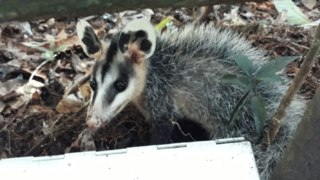
The Guianan white-eared opossum is an opossum species from South America. It is found in Brazil, Suriname, French Guiana and Venezuela.

The nine species in the genus Philander, commonly known as gray and black four-eyed opossums, are members of the order Didelphimorphia. Mature females have a well-developed marsupium. The tail appears to be hairless except for the proximal 5 or 6 cm, which has a few long hairs. The tail is slightly longer than the head-and-body length, and it is black for the proximal one half to two thirds of its length. The genus is closely related to Didelphis but the species of Philander are smaller than those of Didelphis. The genus formerly included Metachirus nudicaudatus, but this species lacks a pouch and so is now considered a separate genus. The common name comes from the white spots above the eyes, which can appear from a distance to be another set of eyes.
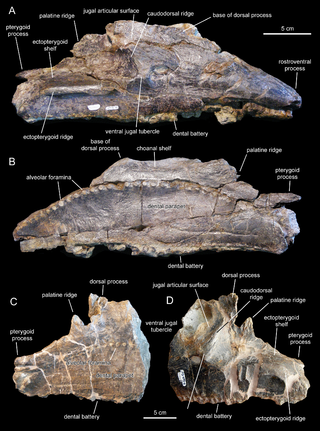
Pararhabdodon is a genus of tsintaosaurin hadrosaurid dinosaur, from the Maastrichtian-age Upper Cretaceous Tremp Group of Spain. The first remains were discovered from the Sant Romà d’Abella fossil locality and assigned to the genus Rhabdodon, and later named as the distinct species Pararhabdodon isonensis in 1993. Known material includes assorted postcranial remains, mostly vertebrae, as well as maxillae from the skull. Specimens from other sites, including remains from France, a maxilla previously considered the distinct taxon Koutalisaurus kohlerorum, an additional maxilla from another locality, the material assigned to the genera Blasisaurus and Arenysaurus, and the extensive Basturs Poble bonebed have been considered at different times to belong to the species, but all of these assignments have more recently been questioned. It was one of the last non-avian dinosaurs known from the fossil record that went extinct during the Cretaceous-Paleogene extinction event.
The Field Hockey Tournament at the 1999 Pan American Games was held on the pitch of the Kildonan East College near Winnipeg, Manitoba, Canada, from Saturday July 24 to Wednesday August 4. It served as a qualification tournament for the 2000 Summer Olympics in Sydney, Australia.
The Tiburones de La Guaira are a baseball team in the Venezuelan Professional Baseball League. Based in the city of La Guaira, they play their home games in Estadio Fórum La Guaira and Estadio Universitario and have won seven national championships since their founding in 1962.

Rambla de Catalunya is a major street in the Eixample district of central Barcelona, Spain. It is one of the city's trendiest streets, with many international fashion shops, and is lined with lime trees.
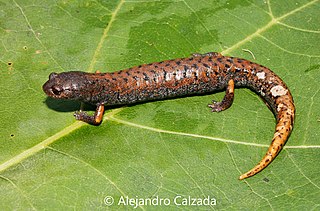
Pseudoeurycea is a genus of salamander in the family Plethodontidae. The members of this genus are commonly known as the false brook salamanders. They are found in Mexico and Guatemala.
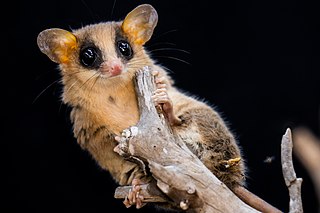
Gracilinanus is a genus of opossum in the family Didelphidae. It was separated from the genus Marmosa in 1989, and has since had the genera Cryptonanus, Chacodelphys, and Hyladelphys removed from it.

The Enciso Group is a geological formation in La Rioja, Spain whose strata date back to the Early Cretaceous.

Neoechinorhynchidae is a family of parasitic worms from the order Neoechinorhynchida.
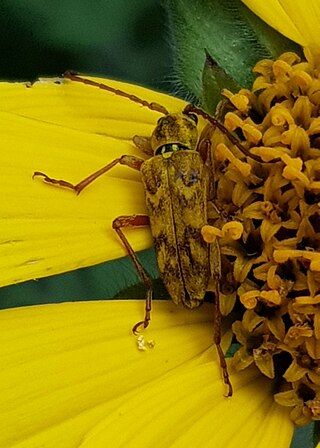
Ochraethes is a genus of beetles in the family Cerambycidae.
Oochoristica is a genus of tapeworms.
Amor Mío is a 1997 Venezuelan telenovela that was seen and broadcast on Venevisión. The telenovela was written by Isamar Hernández and Tabare Perez. Astrid Gruber and Julio Pereira starred as the main protagonists.
Spadellidae is a family of sagittoideans in the order Phragmophora. Spadellidae prey on plankton and commonly reside in the epipelagic zone of the ocean.
Xenokrohnia is a genus of chaetognaths in the family Heterokrohniidae. It consists of one species, Xenokrohnia sorbei Casanova, 1993, which lives in a marine environment. The initial discovery was made from six specimens found in a deep-sea search in the Bay of Biscay for Spadella equidentata Casanova, 1987. A uniquely large (ventral) secretory gland, separate from other chaetognaths, defined the new genus and species. The gland, which is likely used to rid the body of digestive fluids, is probably due to the unique feeding habits of the species; these may include scavenging habits. The presence of an unusual and seemingly superfluous digestive utility is similar to Archeterokrohnia palpifera Casanova, 1986, which have a larger pair of pedipalps then what is common for chaetognaths.
Calispadella is a genus of chaetognaths in the family Spadellidae. It consists of one species, Calispadella alata Casanova & Moreau, 2005. It is differentiated from other species of Spadellidae by the presence of an unusually long tail segment and a rare aspect of the lateral fins, similar to that of Paraspadella gotoi Casanova, 1990. The species is noted by the complete development of seminal vesicles in juveniles and the use of lateral fins for buoyancy in the deep-sea waters where the specimens were found. It was the first to be described exclusively in the range of deep-sea hydrothermic vents.











